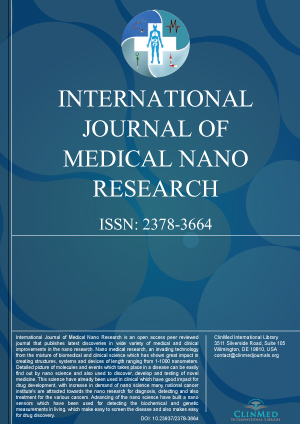Archive
Open Access DOI:10.23937/2378-3664.1410040
En Bloc Staining with Uranyl Acetate Zero (UA-Zero) for Transmission Electron Microscopy
Santhana Raj L, Fauzah Abd Ghani, Jing Siew Ting, Intan Shameha Abdul Razak and Nur Afrina Muhamad Hendri
Article Type: Electron Microscopy | First Published: 2023/12/15
Uranyl acetate (UA) is one of the heavy metals used to stain tissue in sample preparation for transmission electron microscopy (TEM). It gives excellent contrast to ultrastructure morphology. Unfortunately, UA is very toxic and has proven to be a carcinogen and radioactive reagent. Meanwhile, UA-Zero is a UA replacement with improved staining property has shown better for staining due to its safety profile and environmental-friendly properties....
Article Formats
- Full Article
- XML
- EPub Reader
Open Access DOI:10.23937/2378-3664.1410039
Possible Effect of Nano Characterization of COVID-19 on Infection and Causing Disease
Wang Shenguo
Article Type: Original Article | First Published: February 23, 2023
In this article, based on analysis of chemical composition and morphology structure of the New Coronavirus Disease-19 (COVID-19), that the COVID-19 belongs a kind protein nanoparticle virus with spherical complex structure has been explained. So, the COVID-19 possesses characteristics of ultra-small size, large specific surface, both hydrophilicity and lipophilicity, that just as all of the nanoparticles. It leads to the COVID-19 producing fast spread speed, large spread range and strong infecti...
Article Formats
- Full Article
- XML
- EPub Reader
Open Access DOI:10.23937/2378-3664.1410038
Zhanao Liu, Ailing Tian, Xin Yi, Nianfeng Sun and Yong Di
Article Type: Research Article | First Published: January 15, 2023
To investigate the transplantation of a functionalized self-assembling nanopeptide hydrogel loaded with adipose-derived mesenchymal stem cells (AD-MSCs) into a rabbit hindlimb ischemia model and to evaluate its effect in promoting vascular regeneration in ischemic tissues. Functionalized self-assembling nanopeptide hydrogels were synthesized, and the physical and chemical properties of the hydrogels were observed by electron microscopy. Primary AD-MSCs were isolated, cultured, immunophenotyped, ...
Article Formats
- Full Article
- XML
- EPub Reader

Volume 10
Issue 1
Issue 1
